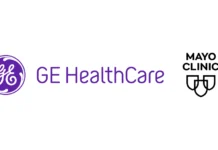It is worth noting that investment in emerging technologies is increasingly being recognized as a very powerful catalyst when it comes to sustainable development and also driving economic growth while at the same time addressing the critical issues of social and environmental challenges.
Healthcare, which has been seen as a sector that goes on to demand prominent effort because of systemic constraints within these markets, presents a distinct opportunity for growth as well as effect when approached by strategies that are innovative.
By way of supporting healthcare businesses’ endeavors in order to harness the technology so as to create digitally enabled health ecosystems, utilizing innovative financing solutions in order to expand accessibility, and also leveraging platform strategies when it comes to efficiency and skill, investors can go ahead and unlock significant societal benefits and economic returns within the emerging economies.
The fact is that there is an ample requirement for new sources of healthcare funding within these markets. It is worth noting that the US goes on to allocate 19% of its GDP to healthcare, whereas Europe spends almost 12%. In a very stark contrast, India and Southeast Asia give out only 3 to 5% of their GDP to health. Africa, in spite of representing over 18% of the world’s population and more than 20% of the global disease burden, spends only 5% of its overall GDP on healthcare, thereby accounting for almost 2% of global health expenditure.
Let us be clear, the COVID-19 pandemic exposed the vulnerabilities when it came to worldwide healthcare infrastructure and also the consequences as far as chronic underfunding in these regions was concerned. This kind of an ongoing disparity highlights the need for investors to go ahead and prioritize healthcare investments, not just in order to drive sustainable development, but also to address crucial gaps that are existing within essential healthcare services. There is a lot to be taken care of but with the help of a system which is consistent and syncs with the demands of a healthcare services spectrum which is evolving, the potential is indeed immense.
Making use of technology in order to create digitally enabled health spectrum
Unleashing the potential when it comes to healthcare investments needs governments, providers, insurers, and consumers to go ahead and reimagine healthcare delivery as well as management. It is worth noting that technology serves as a foundation for making such prominent progress within the healthcare sector throughout the emerging markets. For example, as per McKinsey, health systems in major African markets such as South Africa, Nigeria, and Kenya could realize only 15% efficiency gains by 2030 by way of adopting digital tools. But in order to tap into these gains, healthcare systems will have to transition from a dependence on traditional infrastructure-focused strategies to a more holistic kind of approach, one that places the patient at the center point and makes use of technology in order to reduce the care costs and also bring services closer to each other.
It is not going to be an exaggeration when we say that Africa has much to learn and gain from the lessons of Asia, where digital health has affected more than 1 billion lives and is anticipated to create almost $100 billion in value by 2025, which is a significant rise from $37 billion in 2020.
In contrast, the digital health market in Africa is anticipated to reach just $5.58 billion in 2025. Although replicating the outcomes in Asia is not going to be completely feasible because of economic differences, Africa can still embrace elements that Asia happens to approach, like making use of low-cost innovation, designing mobile-first delivery models, and cultivating public-private collaboration.
In order to bridge this gap, the health ecosystem in Africa must integrate physical services along with digital and also coordinate with numerous partners such as traditional healthcare providers along with health technology companies. Such kind of an integration can make sure of a complete care continuum, widen patient access to primary care, and help providers to better manage as well as track diseases, thereby improving health and business and facilitating fast access to acute care.
We are indeed witnessing this kind of an integration when it comes to the digitization of traditional care models in numerous emerging markets. Traditional private hospital providers are executing digital interfaces in order to offer telemedicine as well as home homecare solutions while at the same time enhancing the engagement of patients all across the care journey.
Helium Health, which happens to be a technology company, has gone on to develop an electronic health record platform that is designed in order to simplify the patient record keeping and hospital management process. Halodoc, which is based out of Indonesia, has gone on to scale its health technology platform by seamlessly streamlining medication delivery, telemedicine, and diagnostics by way of connecting users with pharmacies, labs, insurers, and, of course, doctors by way of a single interface.
Apart from this, the scope of AI in Akido Labs goes on to demonstrate the capability of AI in order to revolutionize healthcare delivery by acting as a real-time clinical assistant by way of guiding caregivers all through the patient visits, generating preliminary diagnostics as well as treatment plans, and also capturing data that is structured. This kind of an approach can elevate efficiency along with investment potential of healthcare in emerging markets where the clinical capacity happens to be limited and access when it comes to physicians is kind of constrained.
What should be the platform strategies when it comes to efficiency and growth?
One of the major challenges that is plaguing the healthcare industry in numerous emerging markets happens to be the fragmentation as well as the inefficiency of subscale care offers.
Traditionally regarded as the responsibility when it comes to governments or non-profit organizations, the healthcare sector in the region is witnessing a prominent rise when it comes to involvement from small- to medium-sized private sector providers. Right from Nigeria to Indonesia, many of these small players are going ahead and consolidating to become large private groups in healthcare. One such example is the Evercare Group—a platform of hospitals, diagnostic centers, and clinics throughout South Asia and Africa, and also India, Pakistan, Bangladesh, Kenya, and Nigeria.
It is worth noting that platform hospital models exhibit the scaling strategies’ value as larger provider networks are going ahead and driving efficiencies through the centralization of major functions like inventory management, procurement, technology systems, and talent acquisition. All these models have also created skill corridors, which help in the exchange of resources as well as human capital throughout the regions. This kind of an approach helps in addressing crucial shortages in one market while at the same time they also leverage the strength in another. This is necessary for developing an advanced skills pipeline, which can, in a partial way, lessen the talent exodus that has sort of weakened emerging market health ecosystems.
Moreover, these platforms can also speed up the progress in terms of creating regional as well as national medical hubs and also tap into pharmaceutical markets to distribute generic drugs, which will go ahead and reduce dependence when it comes to overseas countries for medical treatment.
As the healthcare ecosystem goes ahead and matures. One can expect a rising migration of care from high-cost regions that have long waitlists to the emerging markets, thereby effectively reversing the narrative of medical tourism. India, for example, has become one of the world‘s most affordable healthcare destinations, with medical tourism contributing almost 7% to its tourism industry. The cost of procedures such as hip or knee replacement in India is almost between $3500-$9000. This is just one-seventh of the cost, which is, at present, levied in Europe as well as other high-cost regions.
In a similar way, hospitals in Nairobi and Lagos are actively attracting patients coming from Europe, who look forward to avoiding long wait times when it comes to dental treatments and surgeries. This kind of trend reflects the investment potential of healthcare in emerging markets across Southeast Asia, where countries such as Singapore, Thailand, and Malaysia have become major players when it comes to medical tourism.
Healthcare financing solutions that are innovative and expand accessibility as well as drive impact
It is well to be noted that investment potential of healthcare in emerging markets often depends heavily on out-of-pocket payments, thereby presenting a major challenge for investors as well as governments.
As per the data from WHO, the out-of-pocket payments comprise 76% of all healthcare expenses in Nigeria, compared to 58% in Pakistan, almost 46% in India, and just 11% in the US. In order to address these disparities, nations are executing high-stakes programs in order to drive broad insurance coverage.
For instance, the Jaminan Kesehatan National Insurance program in Indonesia has attained coverage of 93% of the population in less than 10 years since its launch in 2014. Similarly, the Ayushman Bharat program in India looks forward to covering the bottom 40% of its overall population.
In spite of the targets for comprehensive, universal healthcare, governments also have to grapple with the burden of containing the costs, which requires effective engagement within the private sector.
For example, in Indonesia, the combination when it comes to private and public insurance choices makes sure of broad coverage by creating a very robust and diverse healthcare spectrum. The healthcare insurance penetration needs collaborative efforts between private and public stakeholders, thereby focusing on the development of policy, raising funding, public advocacy when it comes to raising awareness, and also stakeholder engagement.
On the other hand, private sector hospital chains are also enhancing their services by way of offering greater affordability and driving innovation when it comes to health insurance as well as financing products customized to meet the requirements of targeted segments. For example, Nigeria‘s Reliance Health secured $40 million in funding in 2022, which was led by General Atlantic, which is one of the largest series B investment rounds that took place in the African health technology sector.
It is well to be noted that artificial intelligence is also playing a major role in expanding the coverage. One of the most significant benefits of the AI spectrum, especially in the health insurance sector, is its capacity to create customized insurance plans. Traditionally, when we talk of insurance policies, they have grouped customers into broad categories that are based on gender, age, and any existing medical condition.
In contrast to this, artificial intelligence helps providers to design their health insurance policies, which are customized specifically to every individual, and charge them in a way that is accessible to everyone.
There is a growing opportunity for businesses from healthcare
Healthcare expenditures within the emerging economies are anticipated to grow quite massively, thereby eventually catching up with those of the developed countries. As the income levels rise, these markets are indeed experiencing a growing demand when it comes to enhanced healthcare services as well as financing products, which go ahead and make care more accessible. This indeed presents a prominent opportunity for healthcare as well as the insurance business, as the sector still remains underpenetrated.
Attaining this kind of health-related sustainable development objective hinges on the development of adaptable healthcare as well as innovative delivery models that can cater to the growing population within these regions. By way of prioritizing long-term scalable investments and embracing tech-driven solutions, stakeholders can unleash the overall potential when it comes to the healthcare sector, thereby responding in an effective way to the dynamics that are changing pretty fast. The expansion of the middle class, which is throttled by the economic growth, is further going to drive demand when it comes to higher-quality healthcare services by creating a very fertile ground as far as innovation and investment in healthcare are concerned.


















